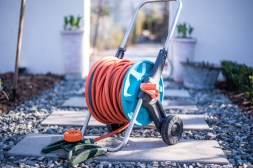Fishing Smart with Tide Knowledge: Enhance Your Catch Rates in Saltwater Areas
Understanding tides is essential for any angler looking to improve their saltwater fishing success. Tides not only influence the behavior of fish but also determine where and when they are most likely to bite. This article will explore how tides work, their impact on fishing, and tips for using this knowledge to your advantage.
What Are Tides?
Tides are the regular rise and fall of sea levels caused by the gravitational forces exerted by the moon and sun. As these celestial bodies align, they create bulges in ocean water, leading to high and low tides. In most coastal areas, there are typically two high tides and two low tides every day, resulting in a tidal cycle that can greatly affect fish behavior.

How Tides Affect Fish Behavior
Fish are highly influenced by tidal movements due to changes in water depth, current strength, and availability of food sources. During high tide, waters flood into shallow areas like estuaries or mangroves that attract baitfish—making it an excellent time for predators like snook or redfish to hunt. Conversely, low tide exposes these feeding grounds but often pushes fish into deeper waters where they might be less accessible for anglers.
The Best Times to Fish According to Tides
The best times for saltwater fishing often coincide with tidal movements. Generally speaking, the period just before a high tide or after a low tide can yield better results as fish become more active during these transitions. Many anglers prefer fishing during the last hour before high tide or the first hour after low tide when fish are on the move searching for food.
Understanding Tidal Currents
In addition to water levels changing with tides, currents play a crucial role in saltwater fishing success. Strong incoming currents can bring nutrients and baitfish closer to shore while outgoing currents often concentrate predatory species near passes or drop-offs where food is funneled out of estuaries. Knowing how different phases of the tide affect current strength can help you position your boat effectively during your fishing trip.
Utilizing Tide Charts Effectively
To make informed decisions about when and where to fish based on tidal movements, consult local tide charts available online or through marine apps. These resources provide detailed information about expected high and low tides along with their timings—allowing you to plan your trips around optimal conditions for catching your target species.
By understanding how tides work and their effects on saltwater fishing patterns, you can significantly enhance your catch rates while enjoying your time on the water. Next time you’re planning a fishing trip, consider checking out those tidal influences—you might just reel in that trophy catch you’ve been dreaming about.
This text was generated using a large language model, and select text has been reviewed and moderated for purposes such as readability.


